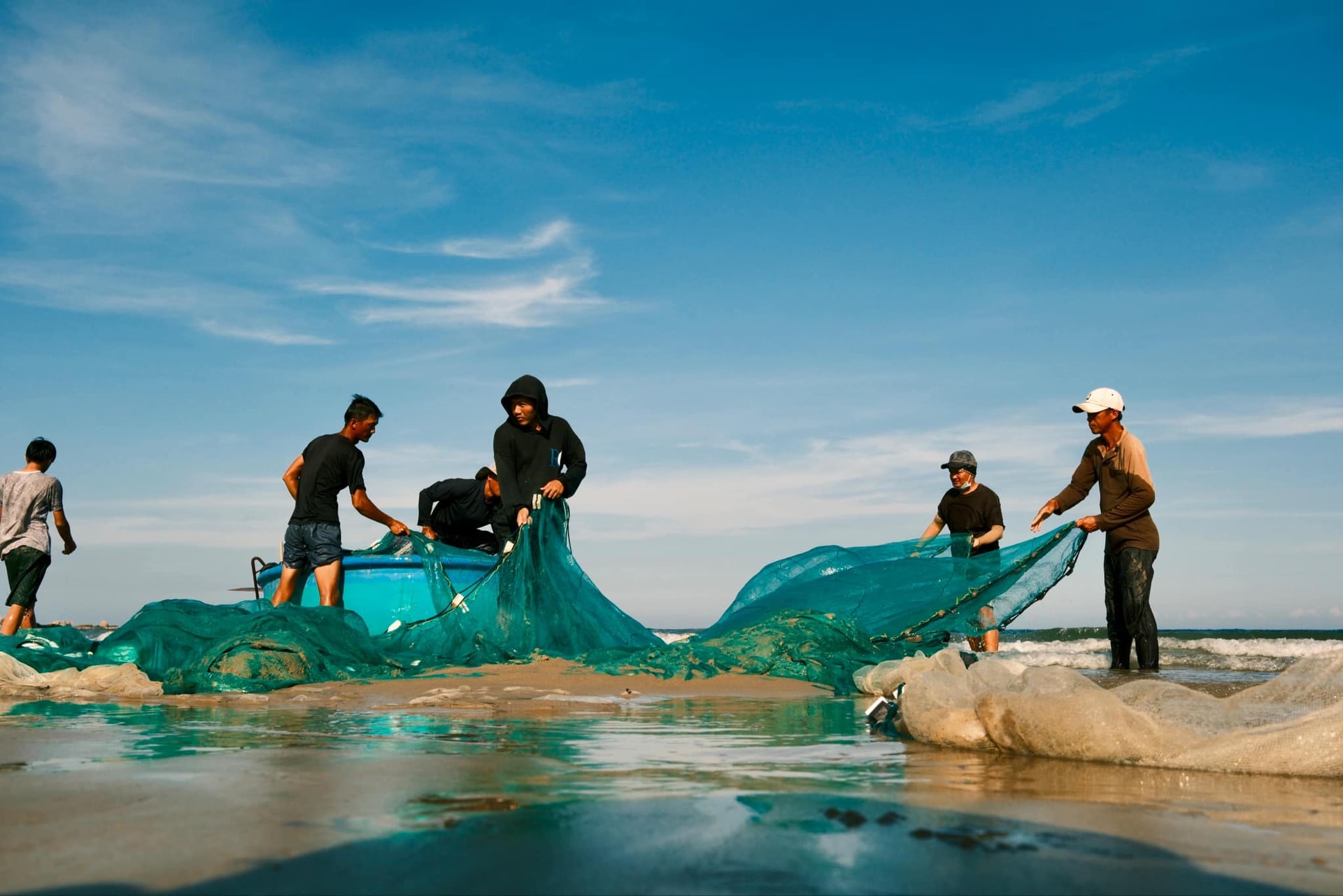
Lively seaside village
That day, Binh Thanh sea was as calm as a lake, nestled next to the picturesque Seven-color rock beach. On the beach, I met Mr. Pham Tuan (55 years old) and 20 other fishermen who were gathering to prepare to cast their nets for the activity of pulling the net. The net was thousands of meters long, and Mr. Tuan and another young man used a basket to row it out a few nautical miles from shore and then dropped it into the sea in a semicircle. The net used by fishermen to pull the net was in the shape of a bow, gradually tapering towards the back. The net was stretched from shore to sea for more than 1 km, then from sea to shore, with the two ends of the net about 200 m apart. They had been doing this job skillfully for several decades, because this was a long-standing traditional profession, inherited by their ancestors.
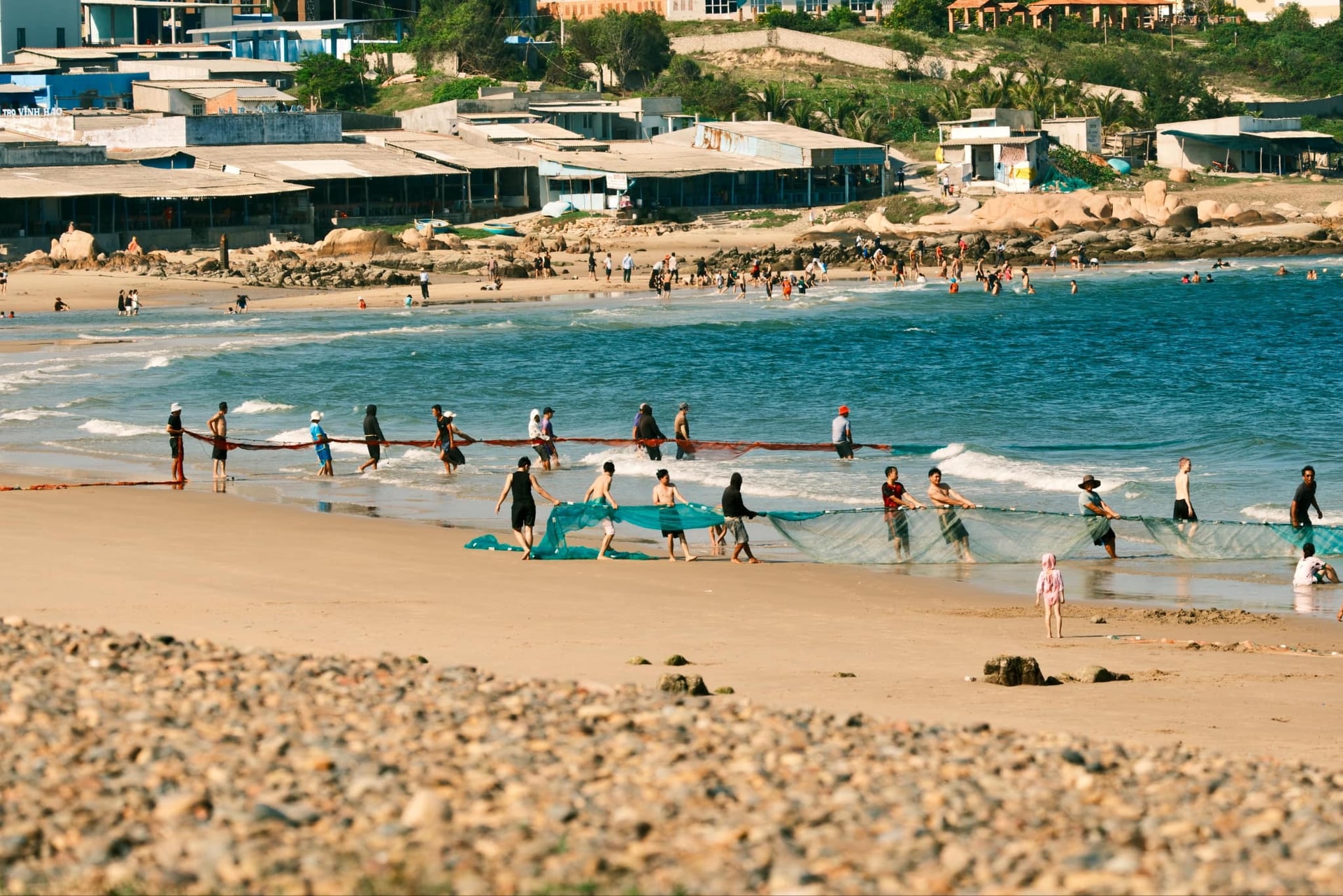
After 30 minutes of casting the net, just coming ashore to rest, taking a puff of cigarette, Mr. Tuan said: “Pulling the net into the sea is a unique way of catching seafood near the shore of the fishermen here, usually starting from February to the end of September of the lunar calendar. The work usually takes place in the early morning, when the sea is calm, people bring the net together to the beach. I have been in this profession for more than 40 years, since I was a child I followed my father to pull the net. In the past, there were a lot of fish, each session caught several hundred kilograms, but now the resources are gradually depleted, in addition, modern fishing equipment has developed so few people are still attached to the profession of pulling the net into the sea.”
When the sun rises high, the sparkling sea surface seems to reflect the hard-working faces and tanned skin of those who have spent their lives at sea. These are men with firm muscles due to years of struggling with the waves and wind, these are women of the salty sea, full of ups and downs. After more than an hour of waiting for the fish to be caught in the net, the fishermen enter the most important stage: pulling the net. Previously, they pulled with their bare hands, which was both painful and difficult, but now they have creatively used a rope with two hooks: one end hooked to the net, the other end wrapped around the waist like an electrician climbing a pole. Step by step back on the sand, they seem to be tug-of-war with the sea. About 20 fishermen are divided into two groups, lined up, feet on the sand, hands holding the rope tightly, moving back rhythmically until the net is pulled in. The job of pulling the net seems simple but requires endurance, because the fishermen have to wake up early, pulling the heavy net in harsh weather.
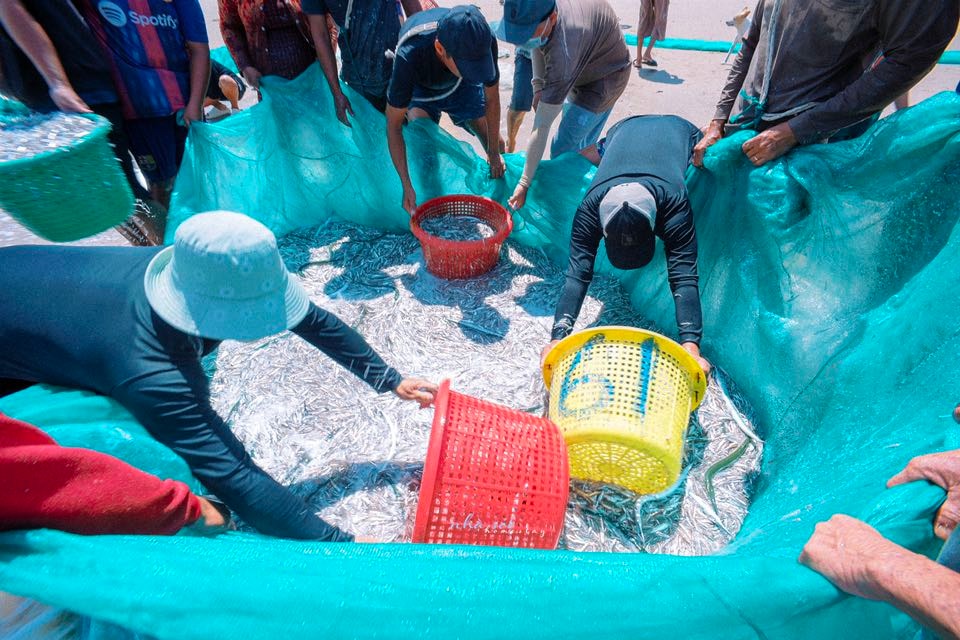
Unique travel experiences
Far away on the silver waves, the fish jumped up into the air, spun around, and then fell into the sea. As the net got closer to shore, more and more fish jumped up, to the joy of the locals and tourists, as the sea became more and more crowded. From young people to elderly families on vacation, everyone eagerly stood on the beach, watching and waiting for the moment the net was pulled up. Many people boldly asked to join in, immersing themselves in the rhythm of life of the fishermen. Mr. Hoang Ngoc Minh, a tourist from Ho Chi Minh City, shared: “The first time I experienced pulling the net with the fishermen, I was both unfamiliar and excited. It seemed simple but it was quite tiring, the heavy net made my shoulders tired. However, the spirit of solidarity and the exciting atmosphere helped me forget my fatigue. The moment I witnessed the fresh fish jumping up was truly an unforgettable memory.”
After nearly an hour of walking backward on the sand, sweat dripping down the fishermen's faces, the nets were gradually pulled ashore, bringing with them the "blessings of the sea" and the strong smell of the ocean. The cheers of many people, mixed with the sound of waves and the sea breeze, created a lively, vibrant symphony of the fishing village. Thousands of mackerel and anchovies sparkled under the sunlight, thrashing about in the nets, mixed with silver shrimp, frogfish, squid and even shiny blue crabs. Many tourists took the opportunity to take photos to record this moment, while others gathered around to watch the fishermen sort the seafood, then quickly bought the squid with the tip still attached, or fresh shrimp to bring back to the hotel to have them cooked for immediate consumption.
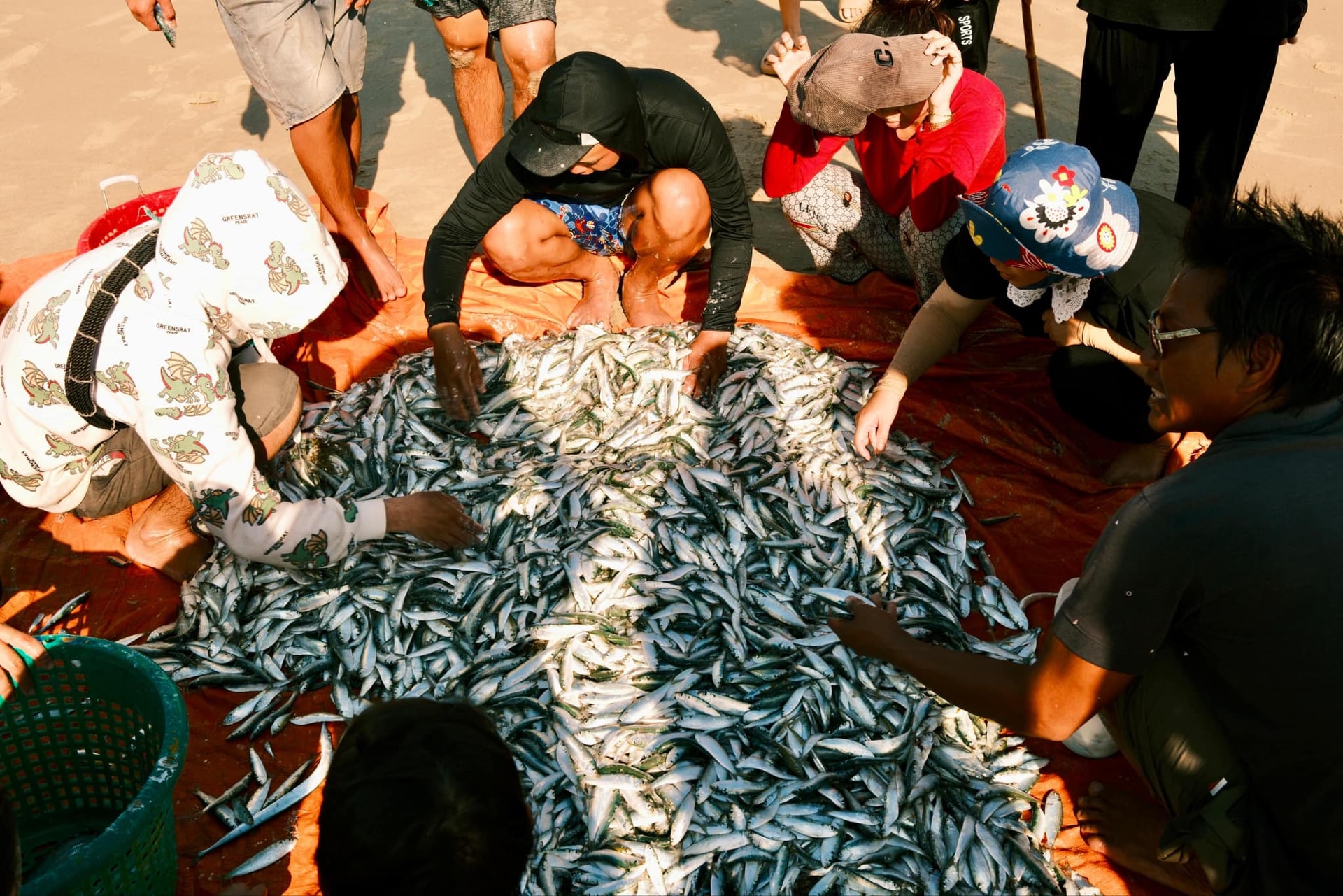
Mr. Tuan looked at me and smiled: “We have a few dozen kilos of fish, we will make another batch later. After the rains in the past few days, there are a lot of fish coming in, and we can earn 300,000 - 500,000 VND/day. In the past, only fishermen pulled the net. Now that there are more tourists participating, our job is much more fun. They help, we tell stories about the sea, and our fishing village is much more lively.” Indeed, the activity of pulling the net is not only a livelihood, but also a cultural bridge. Tourists can learn how to classify fish, listen to folk stories about the sea. Through that, it vividly depicts a picture of a vibrant labor force and is also a place where tourists find simple joy in the midst of a busy life. This is also a part of the cultural heritage of the local people.
In the past, only villagers pulled the nets. Now that tourists join in, my job is much more fun. They help, I tell them stories about the sea, my fishing village is much more lively.
Fisherman Pham Tuan - Lien Huong commune
In coastal areas such as Phan Ri Cua, Ganh Son, Mui Ne, Ke Ga, Binh Thanh... although the activity of trawling the forest net is not yet considered a tourism product, it always attracts tourists who want to explore . Recently, local travel companies have started to include the experience model of "trawling the forest net with fishermen" in the tour program, combined with activities such as: swimming, enjoying fresh seafood, or visiting fishing villages. This is a unique highlight that not all coastal areas have.
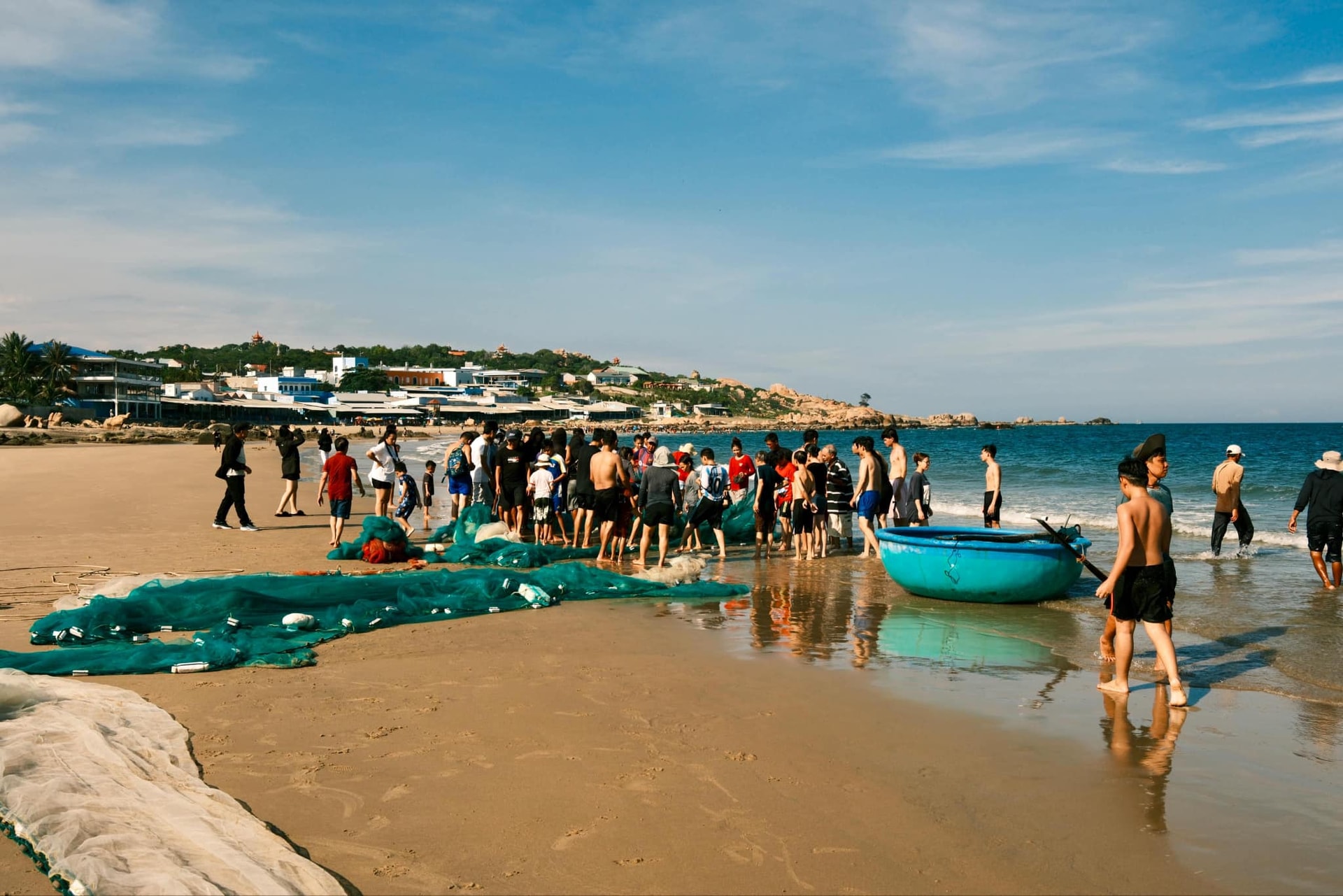
The sun was high, I greeted Mr. Tuan and the fishermen in Binh Thanh fishing village, while they were still working hard, continuing to catch the second net. In the sound of the waves, the bustling laughter and the eyes shining with joy of those who have spent their lives at sea, I thought that if the trawling profession is exploited well, it will not only increase the income of fishermen, but also open up a unique and attractive tourism "product". There, the rhythm of life of the fishing village will still exist forever, a place to nurture cultural values, a symbol of community cohesion and this traditional profession will certainly be a highlight in the journey of tourists exploring coastal areas.
Source: https://baolamdong.vn/ve-lam-dong-trai-nghiem-keo-luoi-rung-cung-ngu-dan-391738.html



![[Photo] Keep your warehouse safe in all situations](https://vphoto.vietnam.vn/thumb/1200x675/vietnam/resource/IMAGE/2025/10/1/3eb4eceafe68497989865e7faa4e4d0e)
![[Photo] President of the Cuban National Assembly visits President Ho Chi Minh's Mausoleum](https://vphoto.vietnam.vn/thumb/1200x675/vietnam/resource/IMAGE/2025/10/1/39f1142310fc4dae9e3de4fcc9ac2ed0)


![[Photo] Hanoi morning of October 1: Prolonged flooding, people wade to work](https://vphoto.vietnam.vn/thumb/1200x675/vietnam/resource/IMAGE/2025/10/1/189be28938e3493fa26b2938efa2059e)
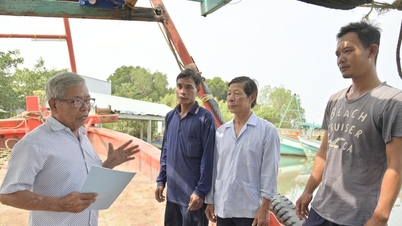

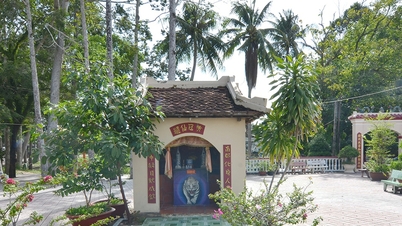

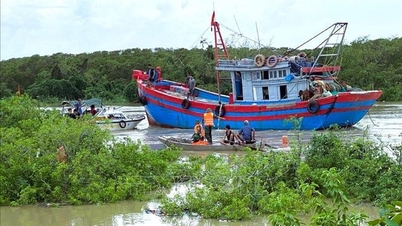

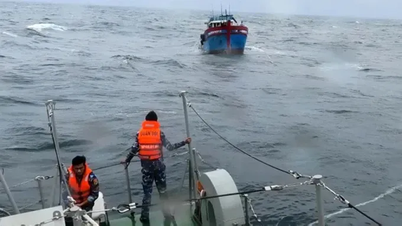


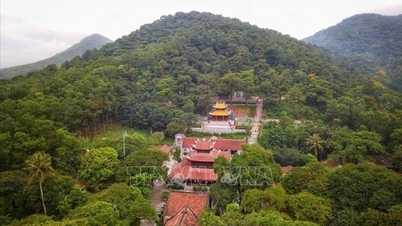


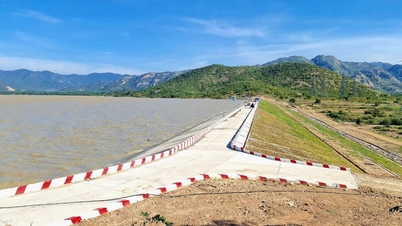








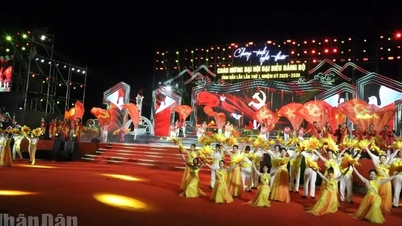



































































Comment (0)